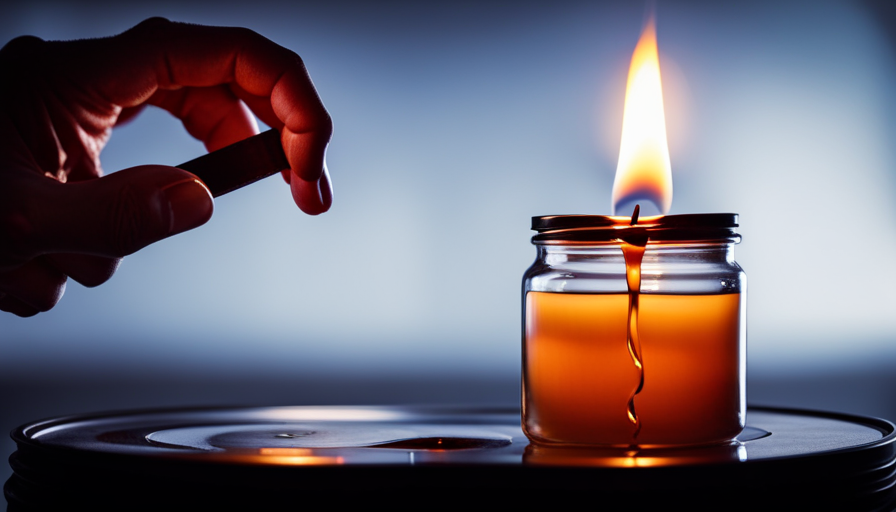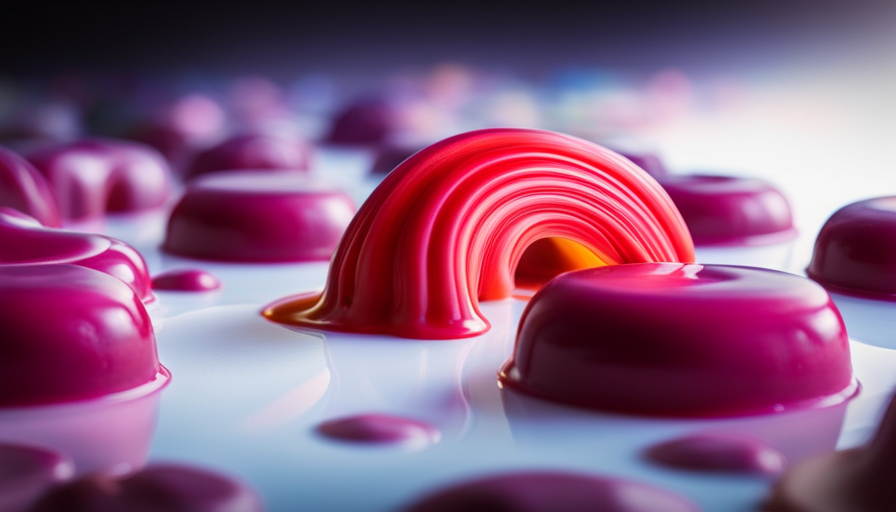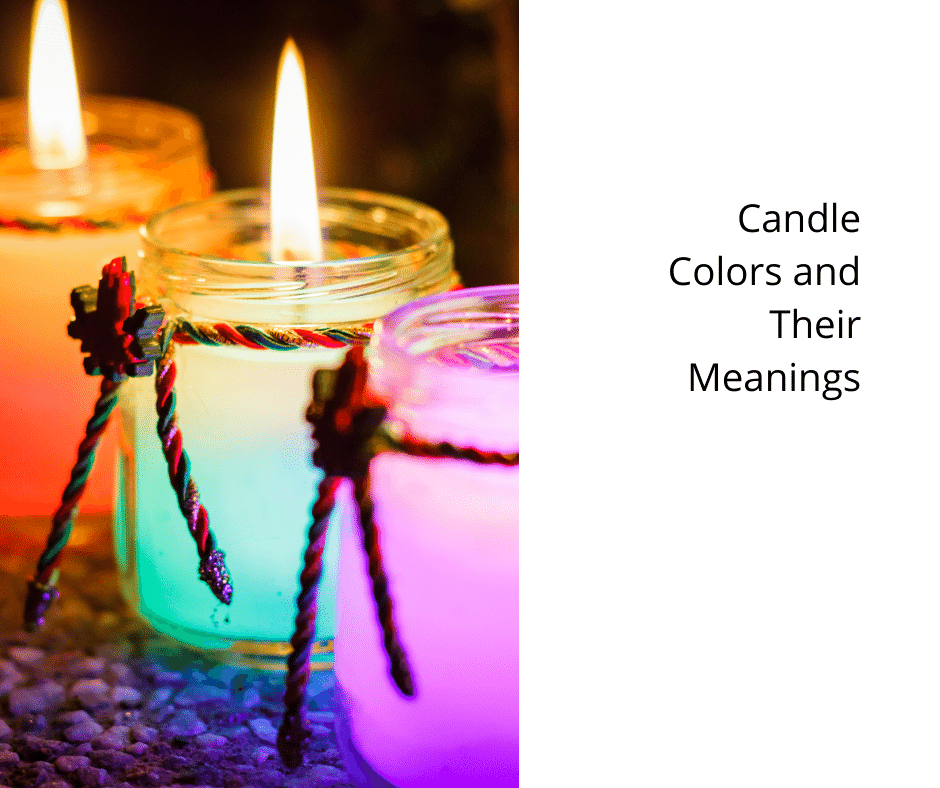Are you aware of the significance of using the correct amount of wax when making a 4 oz candle? This is essential for achieving a steady and prolonged burn.
In this article, I will guide you through the process of determining the ideal amount of wax for your 4 oz candle, ensuring that you achieve the desired results every time.
Candle making is an art that requires precision and attention to detail. By understanding the basics and gathering the necessary materials and tools, you can create beautiful and aromatic candles that will enhance any space.
Calculating the wax amount is a crucial step that can make or break your candle’s performance. I will share with you techniques to choose the right wax type, add fragrance and color, and set and cure your candle for optimal results.
Get ready to dive into the world of candle making and discover the secrets to creating the perfect 4 oz candle. Let’s get started!
Key Takeaways
- Knowing the right amount of wax is crucial for making a 4 oz candle.
- Candle making requires precision, attention to detail, and the use of necessary materials and tools.
- The wax-to-vessel ratio determines the amount of wax needed, considering shrinkage and overflow.
- Choosing the right wax type, adding fragrance and color, and setting and curing the candle are important techniques for achieving optimal results.
Understanding the Basics of Candle Making
So, you’re ready to dive into the wonderful world of candle making, but first, let’s get down to the basics and understand how much wax you’ll need for a 4 oz candle.
When it comes to candle making, there are some basic techniques you need to know. Start by gathering all the necessary materials and tools, such as a double boiler, a thermometer, a heat-resistant container, a wick, and fragrance or essential oils. It’s important to take safety precautions when working with hot wax. Always work in a well-ventilated area and keep a fire extinguisher nearby.
To determine how much wax you’ll need for a 4 oz candle, you’ll need to consider the container size, as well as the desired height and diameter of the candle. As a general rule of thumb, you’ll need about 4 ounces of wax for a 4 oz candle. This accounts for some shrinkage that occurs as the wax cools and solidifies.
Next, we’ll move on to gathering the necessary materials and tools to get started on your candle making journey.
Gathering the Necessary Materials and Tools
Firstly, you’ll need to gather all the materials and tools required for making a 4 oz candle. To calculate the wax quantity needed, you’ll need a kitchen scale, a pouring pitcher, and a thermometer.
-
Kitchen scale: This essential tool allows you to measure the precise amount of wax needed for your 4 oz candle. It ensures accurate results and helps maintain consistency in your candle making process.
-
Pouring pitcher: This tool is perfect for melting and pouring the wax. It has a long handle and a spout, making it easy to pour the melted wax into the candle container without any mess.
-
Thermometer: It’s crucial to monitor the temperature of the wax to achieve the best results. A thermometer helps you ensure that the wax is heated to the correct temperature for pouring, avoiding any damage to the container or uneven burning of the candle.
By gathering these essential candle making tools, you’ll be well-prepared to move on to the next step of calculating the wax amount for a 4 oz candle. It’s important to have these tools on hand to ensure the success of your candle making process.
Calculating the Wax Amount for a 4 oz Candle
When calculating the wax amount for a 4 oz candle, it’s important to consider the wax-to-vessel ratio. This means determining the amount of wax needed to fill the vessel to the desired level.
Additionally, it’s crucial to take into account shrinkage, as wax tends to shrink as it cools and solidifies.
Finally, one must also consider the possibility of overflow, as adding too much wax can cause it to spill over the sides of the vessel.
Taking these factors into consideration will help ensure that the candle is properly proportioned and avoids any potential issues.
Wax-to-Vessel Ratio
To create a captivating 4 oz candle, it’s crucial to strike the perfect balance between the amount of wax and the size of the vessel. The wax-to-vessel ratio is essential in determining the right amount of wax needed for your candle.
When melting the wax, it’s important to consider the type of wax you’re using and its specific melting point. This will ensure that the wax is properly heated and ready for pouring. Additionally, mastering pouring techniques is key to achieving a smooth and even surface on your candle. Pouring too quickly or too slowly can affect the final appearance of the candle.
Once you have calculated the correct amount of wax for your vessel, it’s time to move on to the next step of considering shrinkage and overflow, which will be discussed in the following section.
Considering Shrinkage and Overflow
Now, let’s talk about how you can avoid any potential shrinkage or overflow when making your 4 oz candle. Shrinkage considerations are important to keep in mind as you determine the amount of wax needed. Different waxes have varying shrinkage rates, so it’s crucial to choose one that minimizes this issue. Be sure to check the shrinkage percentage provided by the wax supplier and adjust your measurements accordingly.
Additionally, keeping the container size in mind is essential for preventing overflow. The vessel should have enough space to accommodate the melted wax without overflowing when the candle is lit. To avoid overflow, leave a small gap at the top when pouring the wax. This ensures that the wax doesn’t spill over the sides when it expands during burning.
Now, let’s move on to choosing the right wax type for your 4 oz candle.
Choosing the Right Wax Type
Selecting the appropriate wax type can make all the difference in creating a high-quality 4 oz candle that fills the room with a warm and inviting aroma. When choosing the wax type for your candle, consider factors such as melting process and desired end result.
One popular wax option for small candles like the 4 oz size is soy wax. Soy wax is known for its clean burn and excellent scent throw. It has a low melting point, which means it’ll melt evenly and release fragrance effectively.
Another option is beeswax, which provides a natural and subtle scent. Beeswax has a higher melting point, so it may require a longer melting process.
If you prefer a more traditional approach, paraffin wax is a common choice. It has a higher melting point than soy wax, but it’s known for its excellent scent throw and smooth finish. However, keep in mind that paraffin wax is a petroleum-based product.
Choosing the right wax type is just the first step in creating a perfect 4 oz candle. In the next section, we’ll explore how to add fragrance and color to your candle, enhancing its overall appeal.
Adding Fragrance and Color to Your Candle
When it comes to adding fragrance and color to your candle, there are a few key points to consider.
First, selecting the right fragrance oil is crucial in creating the desired scent for your candle. Be sure to choose a fragrance oil that’s specifically designed for candle making and follow the recommended usage rates.
Additionally, using dyes or pigments can add a pop of color to your candle. Experiment with different shades and amounts to achieve the desired hue, but always remember to follow the recommended guidelines for safe usage.
Selecting the Right Fragrance Oil
To find the perfect fragrance oil for your 4 oz candle, you’ll want to explore a delightful array of scents that’ll make your space feel truly inviting. When it comes to fragrance selection, there are countless scent options available to suit your personal preferences. From calming lavender to uplifting citrus, the possibilities are endless.
Consider the mood you want to create in your space and choose a fragrance that aligns with that. Whether you prefer floral, fruity, or woody scents, there’s something for everyone.
Once you’ve selected the right fragrance oil, you can move on to using dyes or pigments for color, which’ll add an extra touch of personality to your candle.
Using Dyes or Pigments for Color
Now, let’s explore how you can add a pop of color to your homemade candles using dyes or pigments. When it comes to dye selection, it’s important to choose dyes specifically made for candle making to ensure they’re safe and won’t affect the burn or scent of your candle.
There are a variety of dye options available, including liquid dyes, dye chips, and powder dyes. Experimenting with color mixing techniques can help you achieve the perfect shade for your candle. Start by adding a small amount of dye and gradually increase until you achieve the desired color intensity.
Remember, a little goes a long way, so start with a small amount and add more if needed. Once you’ve achieved the desired color, you can move on to preparing and pouring the wax, creating a beautiful and vibrant candle.
Preparing and Pouring the Wax
First, you’ll need to determine the amount of wax needed for your 4 oz candle. When preparing the wax for your candle, it’s important to have the right amount to ensure a successful and properly sized candle.
To do this, you can use a simple formula: the volume of wax needed is equal to the volume of your container. In this case, since you have a 4 oz candle, you’ll need 4 oz of wax.
Once you have the appropriate amount of wax, it’s time to start pouring. There are various pouring techniques you can use, depending on the desired outcome.
One popular method is the single pour technique, where you heat the wax to the appropriate temperature, add any desired fragrance or color, and pour it directly into the container.
Another technique is the layered pour, where you pour multiple layers of different colored wax to create a visually appealing effect.
After pouring the wax, it’s important to let it set and cure properly. This can take anywhere from a few hours to a couple of days, depending on the type of wax used and the ambient temperature. During this time, the wax will solidify and become firm, ensuring a stable and long-lasting candle.
Preparing and pouring the wax is a crucial step in candle making. Once you have determined the amount of wax needed and have poured it into the container using your preferred technique, the next step is to let it set and cure.
Setting and Curing the Candle
After preparing and pouring the wax into the container, the next step is to allow the candle to set and cure. This is an important part of the candle-making process as it ensures that the wax solidifies properly and the fragrance is infused evenly throughout the candle.
The setting time for a 4 oz candle can vary depending on the type of wax used, but generally, it takes around 1 to 2 hours for the wax to harden completely.
Once the candle has set, the curing process begins. During this time, the candle continues to cool and harden, allowing the fragrance to fully develop and the wax to reach its optimal burning state. The curing process typically takes 24 to 48 hours, but it’s important to check the specific instructions provided with the wax you’re using for more accurate timing.
During the setting and curing period, it’s crucial to keep the candle undisturbed and in a cool, dry place. This will ensure that the wax solidifies properly and maintains its scent. Once the candle has fully set and cured, it’s ready for testing and adjusting the burn time.
Transitioning into the subsequent section about testing and adjusting the burn time, it’s important to ensure that the candle burns evenly and for the desired duration.
Testing and Adjusting the Burn Time
Once the candle has fully set and cured, it’s time to test and make any necessary adjustments to ensure the candle burns evenly and for the desired duration. Here are four important steps to follow when testing and adjusting the burn time of your 4 oz candle:
-
Light the candle and let it burn for one hour: This initial burn will help establish a good melt pool and ensure the candle is properly warmed up.
-
Measure the burn rate: Use a timer to track how long it takes for the candle to burn down one inch. This will give you an idea of the burn rate and help you determine if any adjustments are needed.
-
Adjust the wick size: If the candle is burning too quickly, you may need to trim the wick slightly to reduce the flame and slow down the burn rate. On the other hand, if the candle is burning too slowly, you may need to trim the wick to increase the flame and speed up the burn rate.
-
Repeat the process: After making any adjustments, repeat the testing process to see if the burn time has improved. Continue adjusting the wick size until you achieve the desired burn time.
Once you’ve successfully adjusted the burn time of your 4 oz candle, you can move on to enhancing its aesthetics by adding decorative elements or choosing a stylish container.
Enhancing the Aesthetics of Your 4 oz Candle
After testing and adjusting the burn time of your 4 oz candle, it’s time to move on to enhancing its aesthetics. Candle decoration ideas and packaging options play a crucial role in making your handmade creation stand out. By incorporating these elements, you can elevate the overall look and appeal of your candle.
To help you visualize the possibilities, I’ve created a 2-column, 3-row table below:
| Candle Decoration Ideas | Candle Packaging Options |
|---|---|
| Delicate dried flower petals | Elegant glass jars |
| Rustic twine and charm accents | Chic and minimalist tins |
| Hand-painted designs | Vintage-style mason jars |
These are just a few examples to inspire your creativity. You can mix and match these ideas or explore other options that resonate with your personal style.
Remember, the packaging is the first thing your customers will see, so make sure it reflects the quality and uniqueness of your candle. By investing time and effort into the presentation, you can create a lasting impression and entice potential buyers.
Now that you have adorned your 4 oz candle with captivating designs and packaging, it’s time to move on to the next section on enjoying your handmade creation.
Enjoying Your Handmade 4 oz Candle
Immerse yourself in the warm glow and enchanting fragrance of your carefully crafted 4 oz candle, creating a tranquil and inviting atmosphere in any space.
Taking care of your candle ensures its longevity and maximizes its soothing effects. Here are three essential tips for enjoying your handmade 4 oz candle to the fullest:
-
Trim the wick: Before each use, trim the wick to approximately 1/4 inch to prevent excessive flickering and soot buildup. This ensures a clean and even burn, allowing the fragrance to disperse evenly throughout the room.
-
Burn it right: When lighting your candle, let it burn for at least two hours or until the entire surface has melted into a pool of wax. This prevents tunneling and promotes an even burn, ensuring no wasted wax. Remember to never leave a burning candle unattended and always place it on a heat-resistant surface.
-
Create ambiance: Enhance the ambiance by placing your 4 oz candle in a cozy corner or on a decorative tray. Pair it with soft music, a good book, or a relaxing bath to create a serene and indulgent experience. The gentle flickering flame and captivating scent will transport you to a state of blissful relaxation.
By following these candle care tips and embracing the calming atmosphere it creates, you can fully enjoy the beauty and tranquility of your handmade 4 oz candle.
Frequently Asked Questions
How long does it take for a 4 oz candle to fully cure?
The curing time of a 4 oz candle can vary depending on several factors. Factors affecting the curing time of 4 oz candles include the type of wax used, the fragrance load, and the ambient temperature and humidity. Generally, it takes around 24 to 48 hours for a 4 oz candle to fully cure.
To achieve a strong scent throw in 4 oz candles, consider using a higher fragrance load and allowing the candle to cure for a longer period of time.
What is the best method for testing and adjusting the burn time of a 4 oz candle?
To test and adjust the burn time of a 4 oz candle, there are various methods you can use. One approach is to trim the wick to different lengths and observe how it affects the burn rate.
Another method is to experiment with different types of waxes or additives to see how they impact the burn time.
Additionally, you can adjust the size and shape of the container to see if it influences the burn rate.
These testing methods will help you fine-tune the burn time of your 4 oz candle to your desired preference.
Can I use essential oils instead of fragrance oils to add scent to my 4 oz candle?
Yes, you can certainly use essential oils instead of fragrance oils to add scent to your 4 oz candle. Essential oils are natural plant extracts that can provide a pleasant aroma to your candles. They come in a wide variety of scents, allowing you to create a unique and personalized fragrance. You can even mix different essential oils together to create a custom scent that suits your preferences.
Are there any safety precautions I should take when melting and pouring the wax for my 4 oz candle?
When it comes to melting and pouring wax for your 4 oz candle, safety precautions are essential. Always use a double boiler or a dedicated wax melting pot to prevent accidents. Keep a fire extinguisher nearby and never leave the melting wax unattended.
Use oven mitts or heat-resistant gloves to protect your hands from burns. Pour the wax slowly and carefully, ensuring it doesn’t spill or splash. Following these precautions will help ensure a safe candle-making process.
Can I use leftover wax from other candle projects to make a 4 oz candle?
Yes, you can definitely use leftover wax from other candle projects to make a 4 oz candle. It’s a great way to reduce waste and make use of recycled materials.
When using recycled wax, make sure to melt it down completely and filter out any debris or wick remnants. Additionally, consider mixing the recycled wax with new wax or alternative wax options to ensure a consistent burn and fragrance.
Conclusion
After delving into the world of candle making, I’ve discovered that the amount of wax needed for a 4 oz candle depends on various factors such as the type of wax and desired burn time.
By understanding these basics, gathering the necessary materials and tools, and following the proper steps, you can create a beautiful and fragrant 4 oz candle that suits your preferences.
So go ahead and venture into the world of candle making, and enjoy the satisfaction of creating your own personalized 4 oz candle.









